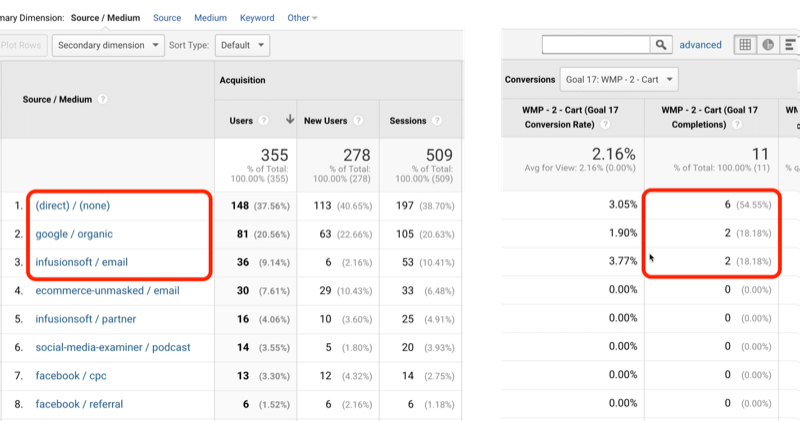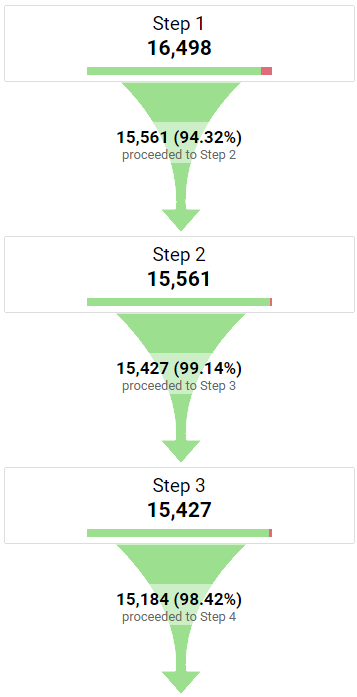What Data Is Google Analytics Goals Unable to Track: Critical Details
What Data Is Google Analytics Goals Unable to Track: Critical Details
Blog Article
Demystifying Google Analytics Limitations: Reveal What Information Goals Can not Track
In the world of digital analytics, Google Analytics stands as a powerful tool that offers valuable understandings right into web site efficiency and user behavior. However, among its abilities, there exist constraints that often go unnoticed. Comprehending what Google Analytics can not track is crucial for a detailed understanding of data interpretation and decision-making procedures. From the ins and outs of user communication with dynamic material to the complexities of cross-device customer trips, these constraints shed light on areas that might stay obscured from traditional analytics viewpoints. By unwinding these constraints, a clearer image emerges, permitting more enlightened strategies and fine-tuned insights into customer interaction and conversions.

Customer Interaction With Dynamic Material
Customer interaction with vibrant content plays a vital duty in understanding individual behavior on web sites and enhancing the overall customer experience. Dynamic web content refers to components on a page that can change without the requirement for a full page reload. This consists of interactive components such as pop-ups, sliders, kinds, and video clips that react to individual activities in real-time. By tracking user interactions with dynamic material, website proprietors can gain valuable insights into user interaction, preferences, and habits.
Google Analytics provides different tools to track user interactions with vibrant web content, such as occasion monitoring and digital pageviews. Occasion tracking allows you to monitor details customer activities, like clicking a switch or seeing a video clip, giving information on exactly how users connect with vibrant components. Digital pageviews can be made use of to track communications that do not result in a new web page tons, providing an extensive sight of individual involvement with dynamic content. By analyzing this information, site owners can make educated choices to improve user experience and drive conversions.
Cross-Device Individual Journeys
Just how can contemporary analytics devices track the complex paths customers take across multiple gadgets in their on-line journeys? Cross-device user trips present a substantial challenge for tracking and analyzing customer habits properly. As customers engage with applications or sites making use of various devices such as tablets, smart devices, and desktop computers, it becomes essential to comprehend just how they relocate in between these systems to optimize user experience efficiently.
Google Analytics faces restrictions in tracking cross-device individual journeys due to privacy concerns and technical constraints - what data is google analytics goals unable to track. While it can provide understandings into individual gadgets' interactions, tracking a seamless individual trip throughout multiple tools stays a difficulty. This limitation can result in insufficient information and fragmented individual insights, making it hard for businesses to develop a unified view of the customer trip
To resolve this problem, companies can utilize sophisticated analytics devices that offer cross-device monitoring capacities, permitting them to obtain a much more holistic understanding of customer habits. By leveraging these tools, businesses can connect the void in tracking cross-device customer journeys and maximize their digital techniques for a seamless individual experience.
Offline Conversions and Attribution
As businesses browse the challenges of tracking cross-device customer journeys, an additional critical facet to think about is the realm of offline conversions and attribution in the realm of information analytics. While Google Analytics gives useful understandings into online user habits, it falls short when it comes to tracking conversions that happen offline. This limitation presents a significant obstacle for organizations that have both online and offline sales channels.
Offline conversions, such as acquisitions made in physical stores or with telephone call facilities, are necessary to understanding the full customer journey. Without the capability to associate these offline conversions to specific on the internet communications, businesses might battle to accurately gauge the impact of their digital marketing efforts.
To resolve this gap, organizations can explore alternate options such as integrating CRM systems with on his explanation the internet analytics devices or utilizing click here now distinct discount codes that can be mapped back to online projects. By linking the void between online and offline data, companies can get a more extensive understanding of their clients' habits and boost their total marketing methods.
Person Customer Recognition
In the world of information analytics, the ability to precisely determine private users across various on-line touchpoints is an essential challenge for businesses seeking to personalize and enhance their advertising methods. While Google Analytics supplies useful insights into individual habits and interactions, it falls short in making it possible for the identification of specific individuals as a result of personal privacy worries and technical limitations. Google Analytics utilizes distinct identifiers such as cookies to track user sessions and actions, yet these do not correspond to determining private users in an individual feeling.

Information From Secure Pages
In spite of the raising occurrence of protected web pages on sites, getting data from these encrypted resources presents a special challenge for electronic analytics platforms like Google Analytics. Protect web pages, indicated by HTTPS in the link, encrypt information exchanged between the customer's browser and the website's server to ensure privacy and protection. While this encryption is crucial for protecting delicate details, it also presents constraints for tracking user habits and celebration analytics data.
Google Analytics deals with challenges in accumulating comprehensive info from safe web pages as a result of the browse around these guys file encryption methods in position. As a result, particular information factors such as referral sources, keyword searches, and even some individual communications might not be totally captured when users access a site via a protected link. This limitation can impact the accuracy and completeness of the data analysis, bring about voids in understanding user behavior and preferences on protected pages.
To navigate this challenge, digital experts might need to explore alternative tracking methods or leverage other devices particularly developed to gather understandings from safe pages. By adapting techniques to accommodate these limitations, businesses can still acquire valuable analytics despite the restraints offered by encrypted connections.
Conclusion
In conclusion, Google Analytics has restrictions in tracking user communication with dynamic web content, cross-device individual journeys, offline conversions, private customer identification, and information from safe pages. Despite its beneficial insights, Google Analytics might not offer a full picture of user involvement across different touchpoints.
User communication with dynamic material plays an important duty in comprehending individual actions on sites and enhancing the total user experience. By tracking user communications with vibrant web content, website owners can get valuable understandings right into user engagement, preferences, and habits.
Google Analytics makes use of unique identifiers such as cookies to track customer sessions and actions, but these do not equate to determining private customers in an individual sense.
As a result, specific data factors such as reference resources, keyword searches, and also some user interactions may not be fully captured when individuals access a site with a safe and secure link.In verdict, Google Analytics has constraints in tracking user interaction with vibrant material, cross-device individual trips, offline conversions, private user recognition, and information from protected web pages.
Report this page